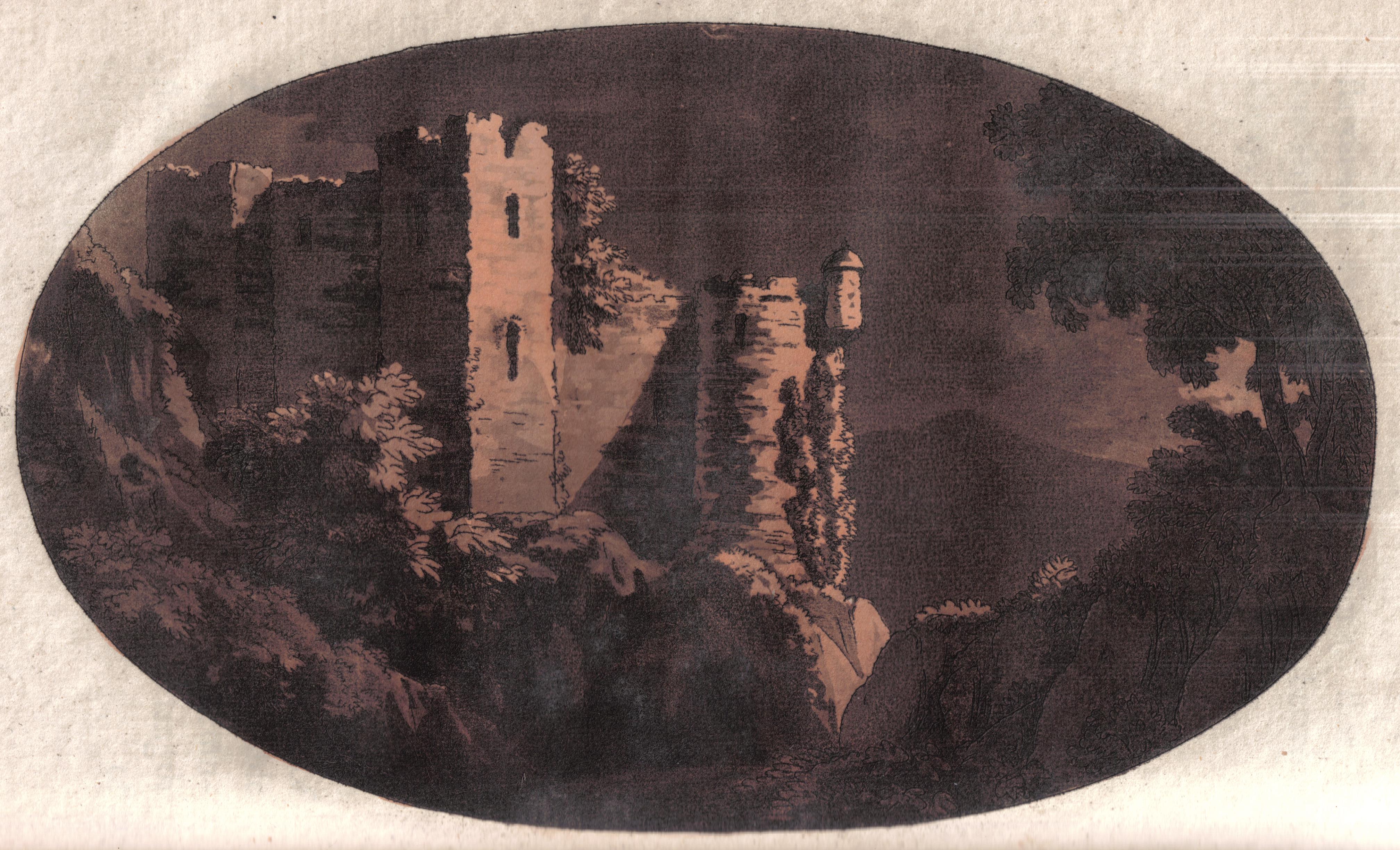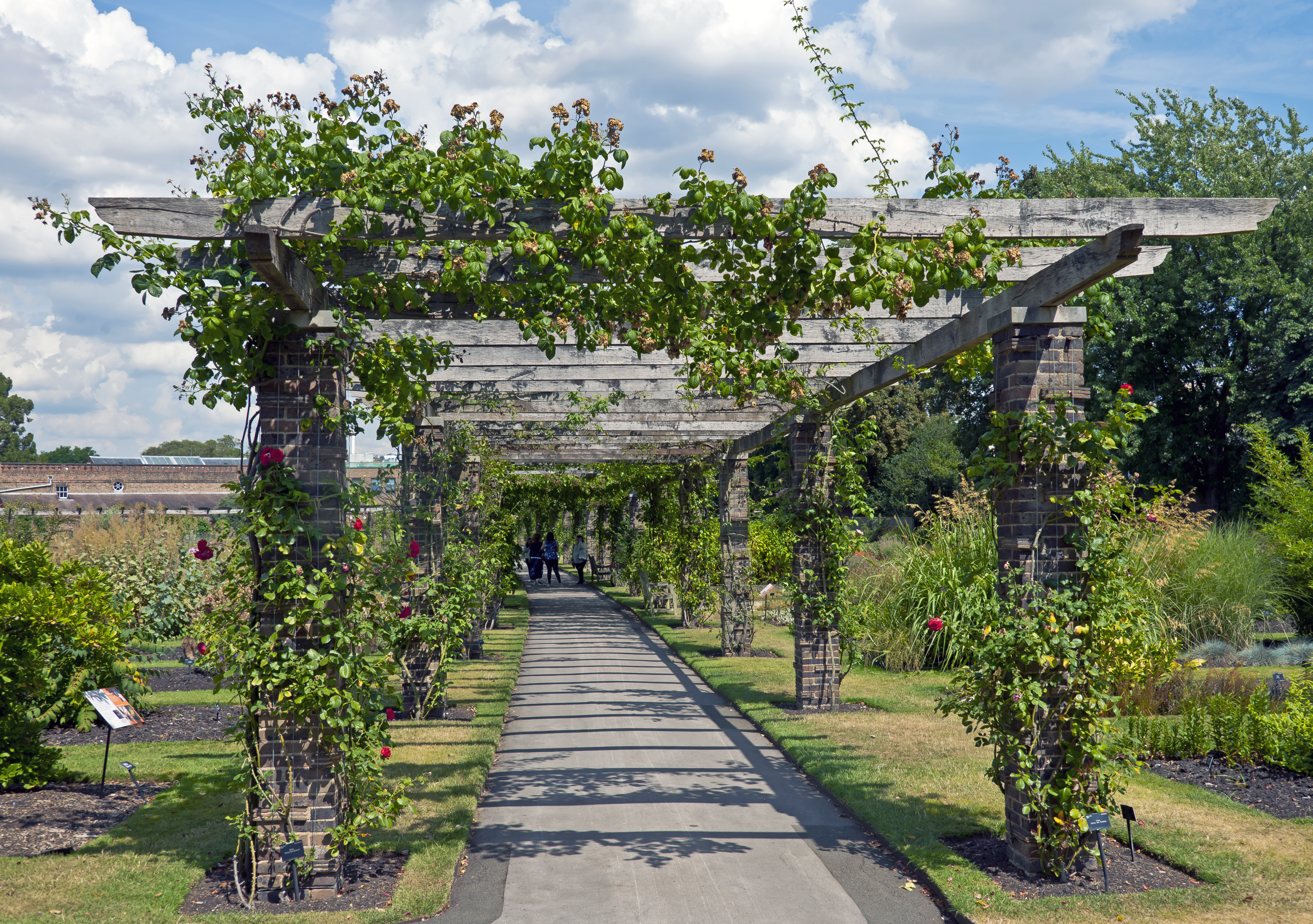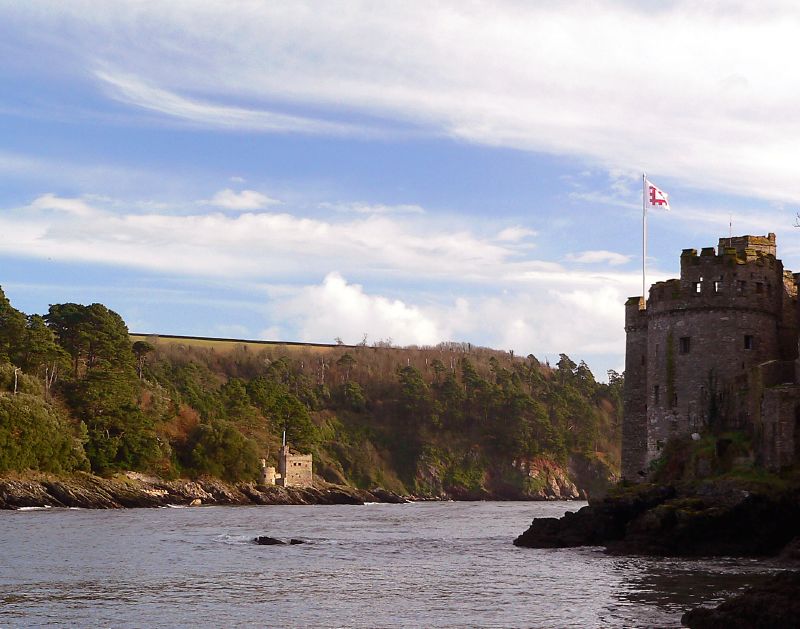|
Sandridge Park
Sandridge Park, near Stoke Gabriel, Devon, is an English country house in the Italianate style, designed by John Nash around 1805 for the Dowager Lady Ashburton, née Elizabeth Baring, the wife of John Dunning, 1st Baron Ashburton. It is a Grade II* listed building. By 1822 it was leased to Sir Robert Newman. It is considered to be a late intimation of Nash's development of the Italianate style. Commissioned by the dowager Lady Ashburton as a country retreat, this small country house clearly shows the transition between the picturesque of William Gilpin and Nash's yet to be fully evolved Italianism. While this house can still be described as Regency, its informal asymmetrical plan together with its loggias and balconies of both stone and wrought iron; tower and low pitched roof clearly are very similar to the fully Italianate design of Cronkhill. History Sandridge, on high ground at the head of the River Dart estuary, was held by the Sandridges under the Bishop of Exete ... [...More Info...] [...Related Items...] OR: [Wikipedia] [Google] [Baidu] |
Sandridge, Wiltshire
Sandridge is a dispersed rural community to the east of Melksham, Wiltshire, England. It is part of the civil parish of Melksham Without. An Ordnance Survey map of 1961 names a settlement at Sandridge Hill, east of Melksham, and a hamlet of Sandridge, to the north; as of 2015 these names are no longer in gazetteers and Sandridge refers to a wider area along the A3102, with Sandridge Common identified on road signs near Melksham. A National School was built in 1873 at Sandridge Common, on land given by Ralph Ludlow Lopes and educated children of all ages until 1953; around that time it became known as Forest and Sandridge Church of England Primary School. In 2015, to cater for the eastward expansion of Melksham, the school moved to a new building on the outskirts of the town. Sandridge Park Sandridge Park (not to be confused with Sandridge Park, Devon) is an ashlar-faced country house which stands in parkland north of the A3102, about east of Melksham. The two-storey h ... [...More Info...] [...Related Items...] OR: [Wikipedia] [Google] [Baidu] |
William Gilpin (priest)
William Gilpin (4 June 1724 – 5 April 1804) was an English artist, Church of England cleric, schoolmaster and author. He is best known as a travel writer and as one of those who originated the idea of the picturesque.Malcolm Andrews"Gilpin, William (1724–1804)"''Oxford Dictionary of National Biography''. Retrieved 20 March 2016 Oxford, UK: OUP, 2004, pay-walled. Life Gilpin was born in Cumberland, the son of Captain John Bernard Gilpin, a soldier and amateur artist. From an early age he was an enthusiastic sketcher and collector of prints, but while his brother Sawrey Gilpin became a professional painter, William opted for a career in the church, graduating from Queen's College, Oxford in 1748. While still at Oxford, Gilpin anonymously published ''A Dialogue upon the Gardens... at Stow in Buckinghamshire'' (1748). Part guidebook to Stowe, part essay on aesthetics, it shows that Gilpin had already begun to develop his ideas on the picturesque. Unusually for the time, Gilpin ... [...More Info...] [...Related Items...] OR: [Wikipedia] [Google] [Baidu] |
Pergola
A pergola is most commonly an outdoor garden feature forming a shaded walkway, passageway, or sitting area of vertical posts or pillars that usually support cross-beams and a sturdy open lattice, often upon which woody vines are trained. The origin of the word is the Late Latin ''pergula'', referring to a projecting eave. As a type of gazebo, it also may be an extension of a building or serve as protection for an open terrace or a link between pavilions. They are different from green tunnels, with a green tunnel being a type of road under a canopy of trees. Pergolas are sometimes confused with "arbors," as the terms are used interchangeably. Generally, an "arbor" is regarded as wooden bench seats with a roof, usually enclosed by lattice panels forming a framework for climbing plants; in evangelical Christianity, brush arbor revivals occur under such structures. A pergola, on the other hand, is a much larger and more open structure. Normally, a pergola does not include ... [...More Info...] [...Related Items...] OR: [Wikipedia] [Google] [Baidu] |
Thomas Pomeroy
Thomas may refer to: People * List of people with given name Thomas * Thomas (name) * Thomas (surname) * Saint Thomas (other) * Thomas Aquinas (1225–1274) Italian Dominican friar, philosopher, and Doctor of the Church * Thomas the Apostle * Thomas (bishop of the East Angles) (fl. 640s–650s), medieval Bishop of the East Angles * Thomas (Archdeacon of Barnstaple) (fl. 1203), Archdeacon of Barnstaple * Thomas, Count of Perche (1195–1217), Count of Perche * Thomas (bishop of Finland) (1248), first known Bishop of Finland * Thomas, Earl of Mar (1330–1377), 14th-century Earl, Aberdeen, Scotland Geography Places in the United States * Thomas, Illinois * Thomas, Indiana * Thomas, Oklahoma * Thomas, Oregon * Thomas, South Dakota * Thomas, Virginia * Thomas, Washington * Thomas, West Virginia * Thomas County (other) * Thomas Township (other) Elsewhere * Thomas Glacier (Greenland) Arts, entertainment, and media * ''Thomas'' (Burton novel) 1969 nove ... [...More Info...] [...Related Items...] OR: [Wikipedia] [Google] [Baidu] |
John Davis (English Explorer)
John Davis ( – 29 December 1605) was one of the chief navigators of Queen Elizabeth I of England. He led several voyages to discover the Northwest Passage and served as pilot and captain on both Dutch and English voyages to the East Indies. He discovered the Falkland Islands in August 1592. Life and career Davis was born in the parish of Stoke Gabriel in Devon circa 1550, and spent his childhood in Sandridge Barton nearby. It has been suggested that he learned much of his seamanship as a child while playing boats along the river Dart, and went to sea at an early age. His childhood neighbours included Adrian Gilbert and Humphrey Gilbert and their half-brother Walter Raleigh. From early on, he also became friends with John Dee. He began pitching a voyage in search of the Northwest Passage to the queen's secretary Francis Walsingham in 1583. Two years later, in 1585, the secretary relented and funded the expedition, which traced Frobisher's route to Greenland's east coast, ar ... [...More Info...] [...Related Items...] OR: [Wikipedia] [Google] [Baidu] |
Henry II Of England
Henry II (5 March 1133 – 6 July 1189), also known as Henry Curtmantle (french: link=no, Court-manteau), Henry FitzEmpress, or Henry Plantagenet, was King of England from 1154 until his death in 1189, and as such, was the first Angevin king of England. King Louis VII of France made him Duke of Normandy in 1150. Henry became Count of Anjou and Count of Maine, Maine upon the death of his father, Count Geoffrey V, in 1151. His marriage in 1152 to Eleanor of Aquitaine, former spouse of Louis VII, made him Duke of Aquitaine. He became Count of Nantes by treaty in 1158. Before he was 40, he controlled England; large parts of Wales; the eastern half of Ireland; and the western half of France, an area that was later called the Angevin Empire. At various times, Henry also partially controlled Scotland and the Duchy of Brittany. Henry became politically involved by the age of 14 in the efforts of his mother Empress Matilda, Matilda, daughter of Henry I of England, to the Anarchy, claim ... [...More Info...] [...Related Items...] OR: [Wikipedia] [Google] [Baidu] |
Bishop Of Exeter
The Bishop of Exeter is the ordinary of the Church of England Diocese of Exeter in the Province of Canterbury. Since 30 April 2014 the ordinary has been Robert Atwell.Diocese of Exeter – Election of new Bishop of Exeter formally confirmed (Accessed 9 May 2014) From the first bishop until the sixteenth century the Bishops of were in with the [...More Info...] [...Related Items...] OR: [Wikipedia] [Google] [Baidu] |
River Dart
The River Dart is a river in Devon, England, that rises high on Dartmoor and flows for to the sea at Dartmouth. Name Most hydronyms in England derive from the Brythonic language (from which the river's subsequent names ultimately derive from an original Celtic etymology. As the lower stretches of the river are still covered in ancient oak woodlands, it is accepted that the first element derives from *Dar-, meaning oak (derow'', Welsh ''derw''). However the second element (evident in the hard consonantal termination of ''Dar-t'') is less certain, with postulated etymologies from ''Darwent'' / ''Derventio'' (Sacred place of Oak) or ''Darnant'' / ''Darant'' (Oak stream). The Ravenna Cosmography records a number of Latinised names for the area, ''Devionisso Statio'' and ''Deventiasteno'' may represent corrupted doublets of a ''Statio'' (Station) on a river named ''Derventio''. Although the name ''Derventio'' is otherwise unattested for the river, it is an established etymolo ... [...More Info...] [...Related Items...] OR: [Wikipedia] [Google] [Baidu] |
Cronkhill
Cronkhill, Atcham, Shropshire, designed by John Nash, is "the earliest Italianate villa in England". Drawing on influences from the Italian Campagna and the Picturesque, including the art of Claude Lorrain, it began an architectural style that was hugely influential in England in the first half of the nineteenth century. Major examples include Trentham Park and Osborne House. Nash's "most original building", it is Grade I listed. History The house was designed by John Nash in 1802 for Francis Walford. Walford was a friend of Thomas Noel Hill, 2nd Baron Berwick, of nearby Attingham Park, and the agent for Berwick's Attingham estates. Mansbridge considers that the design was "almost certainly inspired" by Claude Lorrain's painting "Landscape near Rome with a View of the Ponte Molle." Lord Berwick was the owner of two Claude landscapes. Walford lived at Cronkhill, managing Lord Berwick's Attingham interests, until their relationship ended acrimoniously in 1828, when Walford ... [...More Info...] [...Related Items...] OR: [Wikipedia] [Google] [Baidu] |
Regency Architecture
Regency architecture encompasses classical buildings built in the United Kingdom during the Regency era in the early 19th century when George IV was Prince Regent, and also to earlier and later buildings following the same style. The period coincides with the Biedermeier style in the German-speaking lands, Federal style in the United States and the French Empire style. Regency style is also applied to interior design and decorative arts of the period, typified by elegant furniture and vertically striped wallpaper, and to styles of clothing; for men, as typified by the dandy Beau Brummell and for women the Empire silhouette. The style is strictly the late phase of Georgian architecture, and follows closely on from the neo-classical style of the preceding years, which continued to be produced throughout the period. The Georgian period takes its name from the four Kings George of the period 1714–1830, including King George IV. The British Regency strictly lasted only from 181 ... [...More Info...] [...Related Items...] OR: [Wikipedia] [Google] [Baidu] |
Italianate Style
The Italianate style was a distinct 19th-century phase in the history of Classical architecture. Like Palladianism and Neoclassical architecture, Neoclassicism, the Italianate style drew its inspiration from the models and architectural vocabulary of 16th-century Italian Renaissance architecture, synthesising these with picturesque aesthetics. The style of architecture that was thus created, though also characterised as "Neo-Renaissance", was essentially of its own time. "The backward look transforms its object," Siegfried Giedion wrote of historicist architectural styles; "every spectator at every period—at every moment, indeed—inevitably transforms the past according to his own nature." The Italianate style was first developed in Britain in about 1802 by John Nash (architect), John Nash, with the construction of Cronkhill in Shropshire. This small country house is generally accepted to be the first Italianate villa in England, from which is derived the Italianate architectur ... [...More Info...] [...Related Items...] OR: [Wikipedia] [Google] [Baidu] |
Sandridge Park, Devon (geograph 1881542)
Sandridge is a village and civil parish between St Albans and Wheathampstead in Hertfordshire, England. History The original name was "Saundruage" meaning a place of sandy soil serviced by bond tenants. The earliest recorded mention of Sandridge is in the year 796 the parish being part of the revenue of the Mercian Kings. It was given by Egfrith son of Offa in the first year of his reign to abbot Eadric second abbot of St Alban's Monastery and to the monks of St Albans. Part of the parish of Sandridge was added to the Municipal Borough of St Albans in 1887. The remainder of the parish was renamed Sandridge Rural in 1894 when Sandridge Rural Parish Council was formed. In 1913 a further 241 acres were transferred to St Albans. The parish name reverted to Sandridge in 1957. Second Battle of St Albans In February 1461 the final skirmishes of the Second Battle of St Albans took place in and around Sandridge as the Earl of Warwick, for the Yorkists, retreated towards Nomansland. ... [...More Info...] [...Related Items...] OR: [Wikipedia] [Google] [Baidu] |
.jpg)






